Main menu
Common skin conditions

NEWS
Join DermNet PRO
Read more
Quick links
Corn and callus — extra information
Corn and callus
Author: Dr Amanda Oakley, Dermatologist, Dept of Dermatology Waikato Hospital, Hamilton, New Zealand, 2005.
What is a corn? What is a callus?
Corns and calluses are common skin lesions in which there is a localised area of hard, thickened skin.
- A corn (clavus, heloma) is inflamed and painful.
- A ‘soft corn’ (heloma molle) is a corn where the surface skin is damp and peeling, for example between toes that are squashed together.
- A callus (tyloma) is painless.
What causes corns and calluses?
Corns and calluses are caused by response to friction and pressure. Repetitive injury results in the skin trying to protect itself from blistering. The basal epidermal cells (keratinocytes) increase in number resulting in thicker prickle cell layer and thicker stratum corneum.
The most common site for a corn or a callus is on the hand or foot, but any area of skin may be affected. Examples include:
- On the palm, from holding a racquet or hammer
- On a knuckle, from pushing oneself out of a wheelchair
- On the side of the foot, from a tight shoe
- On the ball of the foot, from running barefoot.
Thick skin on the entire palm or sole is known as palmar or plantar keratoderma. This term is also used for genetic disorders in which there are multiple areas of callus (punctate keratoderma).
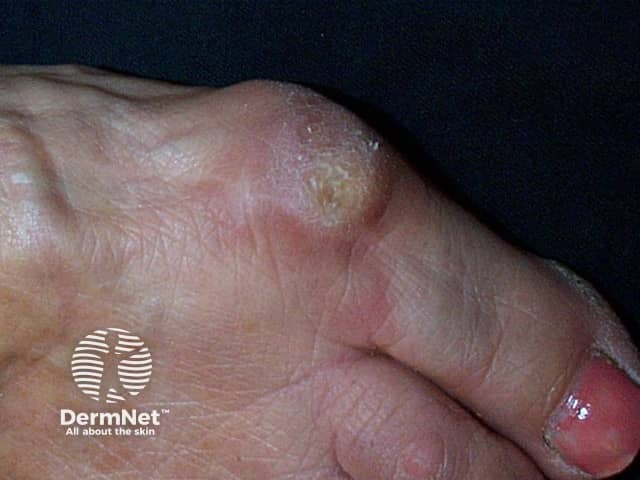
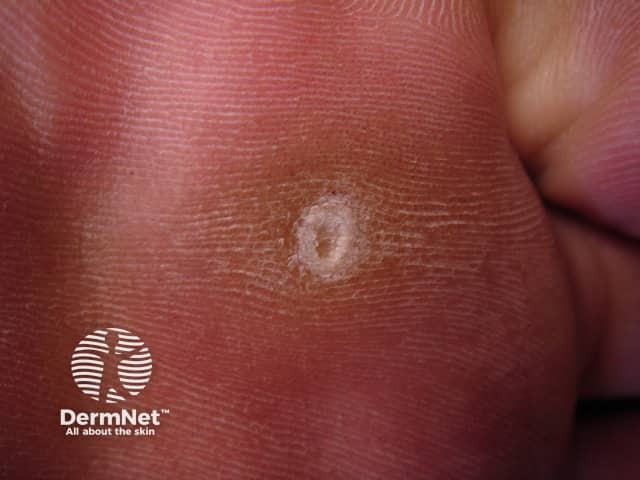
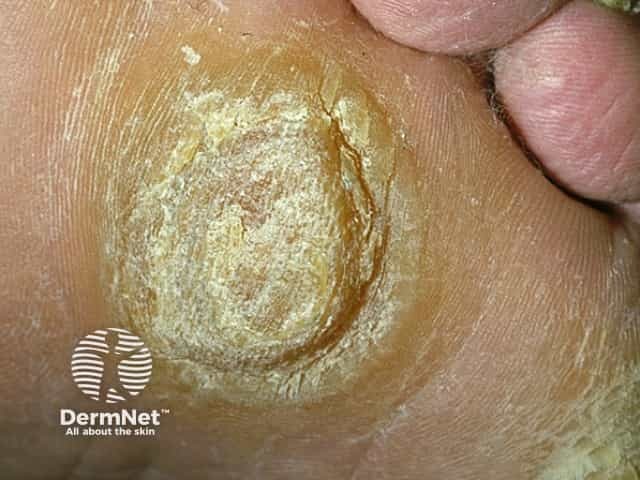
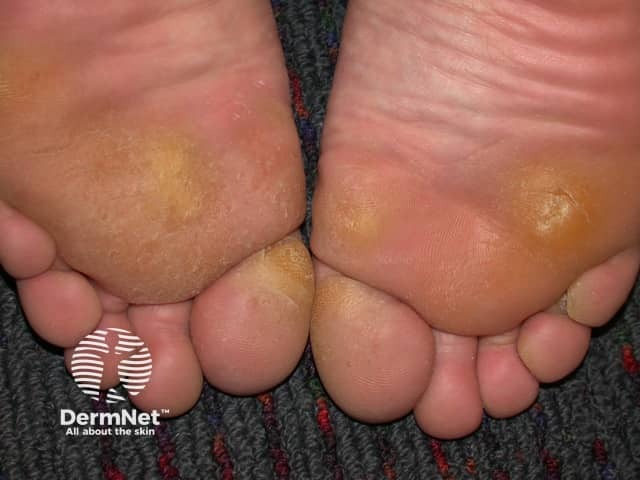
Calluses

Callus from motorbike
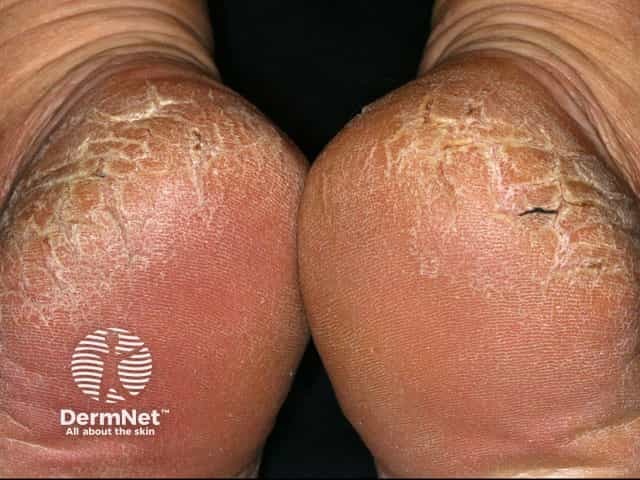
What is the treatment for a corn or callus?
The important thing is to relieve the pressure on the affected area of skin.
- Choose well-fitting, comfortable, flat footwear.
- Use leather gloves for repetitive tasks that injure the skin.
- Apply a protective corn plaster or cushion to apply pressure more evenly around the affected area to reduce friction.
- Separate toes using soft cotton, lamb's wool, moleskin or web spacers to relieve pressure.
- Special orthotics may be made to measure.
Reduce skin thickness.
- Sandpaper, file or pumice the surface (this is easier when the skin has been soaked in warm water for 10 minutes or longer).
- Pare down the surface using a specially designed corn trimmer to remove the central core.
- Apply keratolytic creams or heel balms containing urea, salicylic acid or lactic acid.
Ease the discomfort of painful cracks (fissures)
- Apply a thick, lubricating ointment such as petroleum jelly.
- Seal the surface with adhesive such as Liquid Bandage™ or nail glue.
- Use antibiotic ointment in case of infection
- Cover with a thick adhesive plaster.
It may be helpful to visit a podiatrist for treatment of a callus or corn on the foot.
Sometimes protruding bone has to be surgically removed by an orthopaedic surgeon, for example bunion repair.
On DermNet
- Common benign skin lesions
- Skin lesions
- Viral warts
- Focal hereditary keratoderma
- Fibromatosis
- Knuckle pads
- Occupational dermatitis among construction workers
Other websites
- Corns — Medscape Reference
- Corns and calluses overview — Medscape Reference
- Patient information: Corns and calluses (The Basics) — UpToDate (for subscribers)
